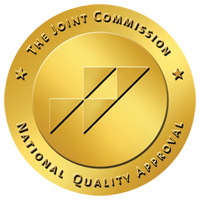Individuals considering treatment for their substance abuse disorder may have come across the concept of a therapeutic community. But what is it and what are the benefits of a therapeutic community? And why is it cited as a key component of addiction treatment and recovery?
1. Structure Encourages Accountability
Central to a therapeutic community’s (TC) approach is its structure. Each participant in a TC has a role, and each role has its responsibilities. These roles may assign leadership positions within the community, giving members opportunities to lead and grow as they heal.
TC’s also assign chores and tasks to community members, encouraging responsibility for one’s space and community areas. When individuals in residential treatment are held accountable for their duties, they are given structured opportunities to grow and achieve specific goals. This consistent accountability helps them build skills and experience progress, which can be a significant shift from the instability they faced before entering treatment.
The practice of having peer accountability and structure can help improve treatment program outcomes. Before seeking treatment, those facing substance abuse disorders may have given up on themselves, and others may have, too. By facilitating a structured environment, individuals can take back control of their lives, one task at a time.
2. Peer Support Provides Motivation and Growth
Being commanded by a superior isn’t often the most motivating approach to leadership. However, when peers support one another, individuals can help motivate one another and navigate challenges in addiction recovery.
A peer-driven environment exists outside a hierarchical structure, often a welcome change from the outside world. TC’s require active participation from all individuals in the community, so trust must be established. This can be achieved when individuals follow through on their responsibilities and spend time together.
In group therapy, participants share their experiences, struggles, and successes. In the beginning, some participants may be quiet, listening instead of weighing in. However, TC’s can facilitate engagement by asking for group feedback and follow-ups from the previous session.
Peers can also serve as role models for others within the community. Individuals may be at different phases of their recovery, and their openness can help shine a light toward the future. By sharing challenges and stories about their journeys, participants can spark belief in one another’s ability to recover.
3. A Holistic Approach Improves Total Wellbeing
The design of a therapeutic community requires a time commitment, making it ideal for inpatient treatment. Connections are made through shared experiences, time, and proximity, allowing participants to fully engage and benefit. Beyond addressing the addiction, TCs help participants improve their overall wellbeing.
Physical health is linked to mental health, and if a person has been battling addiction, fitness has likely been ignored. Communities will encourage a total life assessment, reclaiming one’s health and outlook on life. This can include committing to physical fitness, and preparing for life after rehab.
Individuals may spend time upskilling, learning new employable skills, and increasing their knowledge. Some TCs work with vocational centers to learn skilled trades while others may connect participants with virtual learning opportunities. Increasing one’s knowledge can offer a confidence boost that also prepares individuals to re-enter society and become self-sufficient.
4. Behavioral and Emotional Change Are the Focus
Changing one’s behavior is difficult for everyone, but if you’re already living with a mental illness, it often feels impossible. In a therapeutic community, behavioral and emotional change are at the core of treatment. Communities strive to identify, understand, and break down the underlying issues that participants face.
Through group therapy, family therapy, role-play, and reflection, participants learn about themselves and examine their experiences and reactions. They can identify their natural response to external and internal triggers in a safe, supportive space. Care providers help facilitate sessions, offering professional insight and suggestions for participants to sample and practice.
Instead of piecing together insights from brief therapy sessions, participants can do so in an insular environment. Communities typically meet more frequently than one would in outpatient care, and coping strategies are encouraged and reinforced consistently. If a new strategy isn’t working, participants can get feedback from their providers on how to adjust or try again.
One’s mental health challenges aren’t treated separately from their substance abuse disorder, instead, they are viewed as a unit. By addressing the root cause of one’s mental health challenges, individuals can enjoy greater success with their inpatient treatment.
Fully Engage in Recovery With a Therapeutic Community
Therapeutic communities give individuals a safe, structured space to focus on their addiction recovery. By layering expert care with peer support, individuals can achieve long-term success and make lasting behavioral change. TCs help individuals set the foundation for life after rehab, giving them the tools and skills needed to sustain recovery.
When you’re considering an addiction treatment program, look for one that offers a therapeutic community. These communities help individuals break through the cycle of addiction with a positive and empathetic support system. In a therapeutic community, participants can successfully navigate recovery and embark on a healthy, happy life after addiction.


